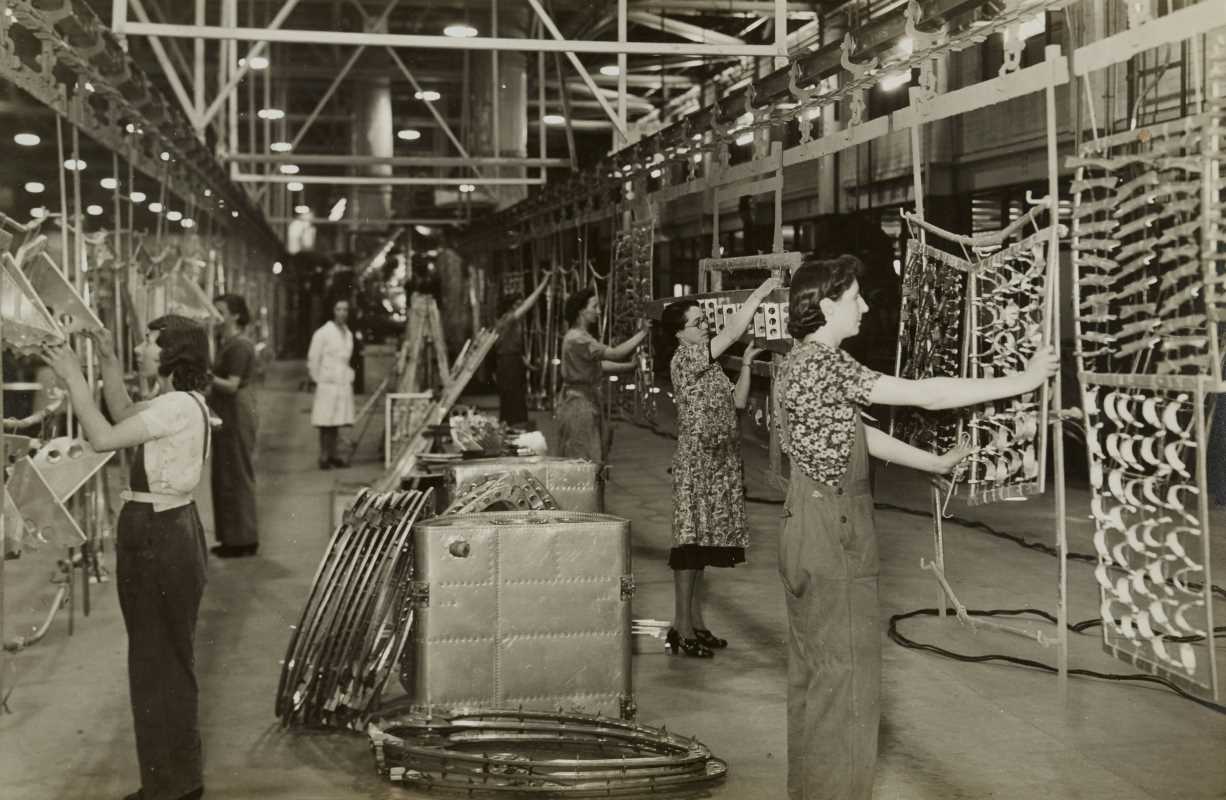Labor Day tends to be a quiet holiday. It marks the unofficial end of summer, the last hurrah for white pants, and a great excuse for a backyard barbecue. We get a welcome day off from work, but many of us don't spend much time thinking about why.It’s easy to take the three-day weekend for granted, seeing it as just another calendar placeholder. But this holiday is more than just a bookend to summer; it's a celebration of the American worker and, more specifically, a tribute to the hard-fought battles of the labor movement that fundamentally shaped our modern lives.
The benefits we enjoy in the workplace today weren't just handed over by benevolent bosses out of the goodness of their hearts. They were fought for, demanded, and won by organized groups of everyday people who believed they deserved better. From the factory floors of the 19th century to the picket lines of the 20th, these workers risked their jobs, their safety, and sometimes their lives to secure basic rights and protections. So, as you fire up the grill this Labor Day, let’s take a moment to appreciate some of the fundamental aspects of modern work life that you can thank the labor movement for.
The Weekend as You Know It
The concept of a "weekend" feels as natural as the rising sun, but it’s actually a relatively modern invention. For much of the 19th century, a six-day workweek was the standard, and for many, it was seven. The idea of having two consecutive days off for rest and leisure was a radical dream. The push for a shorter workweek was a cornerstone of the early labor movement. Workers argued that endless labor was dehumanizing and that people needed time for family, community, and simple rest. The slogan "Eight hours for work, eight hours for rest, eight hours for what we will" became a rallying cry.
This wasn't an easy fight. It involved decades of strikes, negotiations, and political pressure. One of the major turning points was in 1926 when Henry Ford, a titan of industry, adopted a five-day, 40-hour workweek for his automotive factory workers. He wasn’t just being nice; he astutely realized that well-rested workers were more productive and that if people had leisure time, they would need things to do, like buying and driving a car. The idea began to catch on, but it wasn't until the passage of the Fair Labor Standards Act in 1938 that the 40-hour workweek was federally mandated, cementing the two-day weekend as a cornerstone of American life.
Ending Child Labor
Today, the idea of sending a six-year-old to work a 12-hour shift in a factory or a mine is horrifying. But for a long time, it was a grim reality. In the late 19th and early 20th centuries, millions of children, some as young as five, were employed in grueling and dangerous jobs. They were cheap labor, and their small hands were considered ideal for certain tasks in textile mills and coal mines. The labor movement was at the forefront of the long, difficult battle to get kids out of the workplace and into the classroom.
Activists and union leaders organized strikes and public awareness campaigns, exposing the brutal conditions these children faced. They argued that childhood should be a time for education and play, not hazardous labor. Photographers like Lewis Hine captured haunting images of child laborers that shocked the public conscience and fueled the movement for reform. Again, the Fair Labor Standards Act of 1938 was a landmark piece of legislation. It established a national minimum wage and, crucially, set minimum age requirements for employment, effectively ending the widespread, systematic exploitation of children in the American workforce.
A Safer Place to Work
Have you ever noticed the fire exit signs in your office, the safety guards on machinery, or the hard hats on a construction site? These aren't just suggestions; they are the legacy of a relentless push for workplace safety. Before the labor movement gained traction, the American workplace could be an astonishingly dangerous place. Factory fires, mine collapses, and equipment-related injuries were tragically common, and employers often treated worker safety as an afterthought. The well-being of an employee was considered secondary to the profits of the company.
Unions fought tirelessly for safer conditions, demanding things like ventilation in mines, fire escapes in factories, and compensation for workers injured on the job. The tragic Triangle Shirtwaist Factory fire in 1911, where 146 garment workers died, many because the exit doors were locked, became a major catalyst for change. The public outcry was immense, and it powered the labor movement's demands for government regulation. This decades-long struggle eventually led to the passage of the Occupational Safety and Health Act of 1970 (OSHA), which created a federal agency responsible for enforcing workplace safety standards across the country.
That Overtime Pay
The 40-hour workweek is the standard, but what happens when a big project demands more time? The concept of being paid extra for that extra work, time-and-a-half for overtime, is another benefit you can attribute to the labor movement. Before these protections were in place, an employer could demand that you work 50, 60, or even more hours a week for the same flat salary. Your time was considered theirs, regardless of how much of it they used. This was a common practice used to extract maximum labor for minimum cost.
The fight for overtime pay was intrinsically linked to the fight for the 40-hour workweek. The goal was twofold: to ensure workers were compensated for their extra time and to create a strong financial disincentive for employers to overwork their staff.
- The Fair Labor Standards Act of 1938 established the overtime standard.
- It mandated that non-exempt employees be paid at 1.5 times their regular hourly rate for all hours worked over 40 in a week.
- This rule protects workers from exploitation and encourages employers to hire more people rather than overworking their existing staff.
- It acknowledges that an employee's time is valuable and that sacrificing personal time for work deserves extra compensation.
- This provision fundamentally changed the power dynamic, ensuring that while an employer can ask for more of your time, it will come at a premium.
Social Security and Other Benefits
The idea of retiring with some measure of financial security is a deeply ingrained part of the American dream. For generations of workers before the 20th century, however, "retirement" simply meant working until you were physically unable to continue, after which you were reliant on family or charity. The concept of a social safety net, providing a pension for elderly citizens, was a radical idea championed by the labor movement. They argued that a lifetime of work should be rewarded with dignity in one's later years.
The Great Depression highlighted the desperate need for such a system, as millions of elderly Americans were left destitute. The labor movement's persistent advocacy was a key factor in the passage of the Social Security Act of 1935. This landmark law created a federal pension system funded by contributions from both workers and employers. While not solely a labor achievement, the movement's influence was crucial. Unions also fought for and normalized other benefits we often take for granted, such as employer-sponsored health insurance and paid sick leave, negotiating them into contracts long before they became more widespread. These victories helped create a society where work provides not just a paycheck, but a foundation for a stable and secure life.
 (Image via
(Image via




